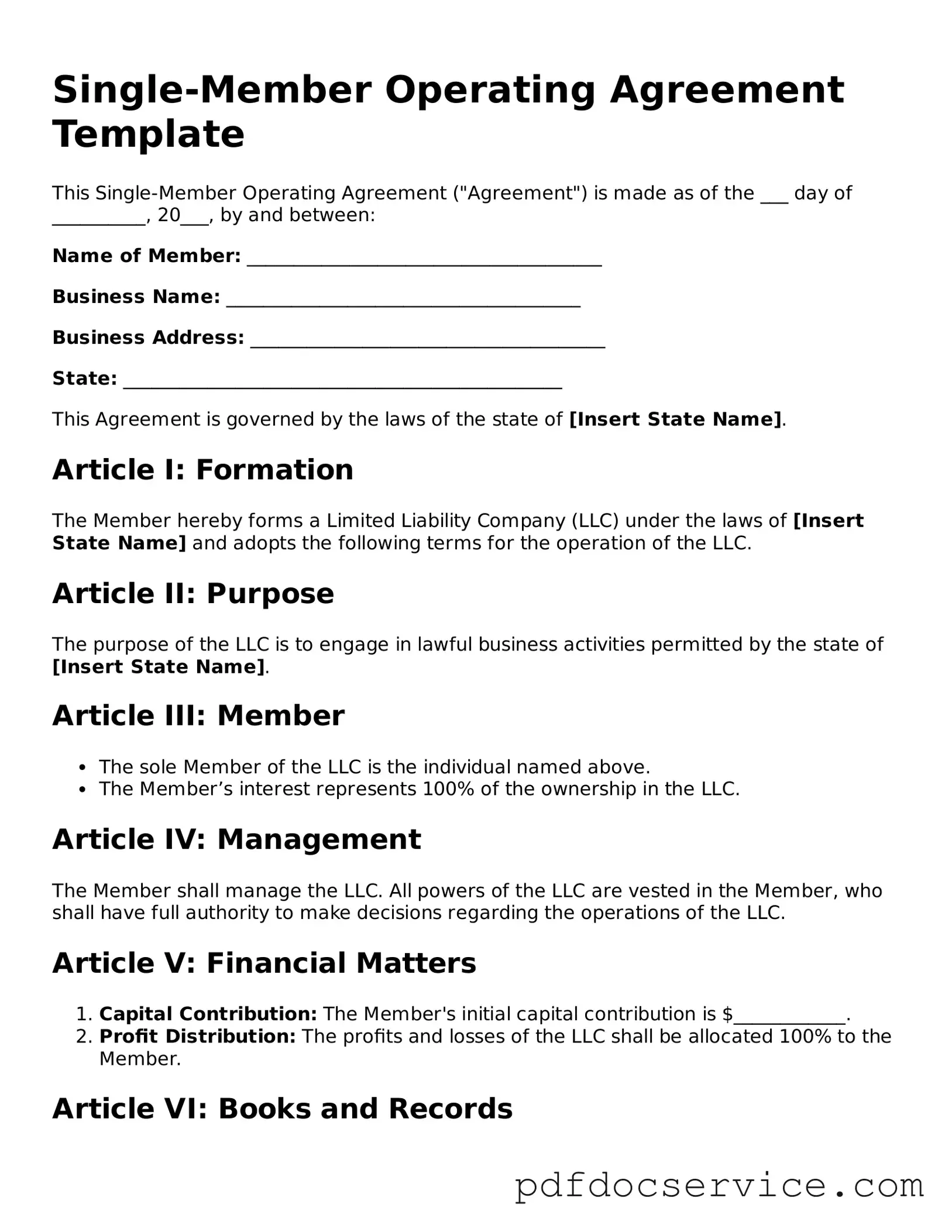The Single-Member Operating Agreement is a crucial document for individuals who own a single-member limited liability company (LLC). This form serves as the foundational guideline for the operation and management of the business, outlining the rights and responsibilities of the sole member. It typically addresses key aspects such as the management structure, financial arrangements, and procedures for making decisions. By detailing how profits and losses will be allocated, the agreement helps to clarify the relationship between the member and the LLC. Additionally, it may cover provisions for transferring ownership, handling disputes, and addressing dissolution processes, ensuring that the member's interests are protected. The importance of this document cannot be overstated, as it not only provides legal protection but also establishes a framework for the company’s operations, fostering a sense of professionalism and accountability. In essence, a well-drafted Single-Member Operating Agreement is an essential tool for any sole proprietor seeking to navigate the complexities of business ownership while minimizing risks and ensuring compliance with applicable laws.
